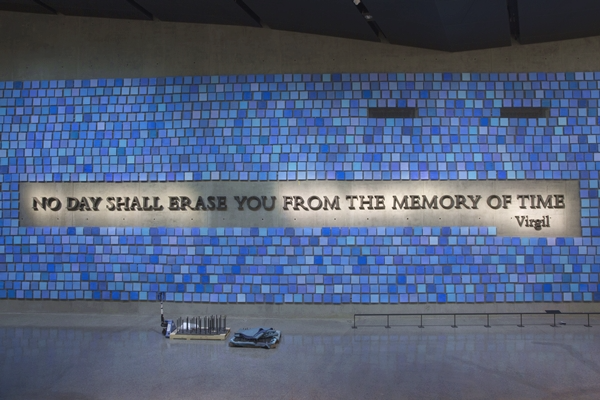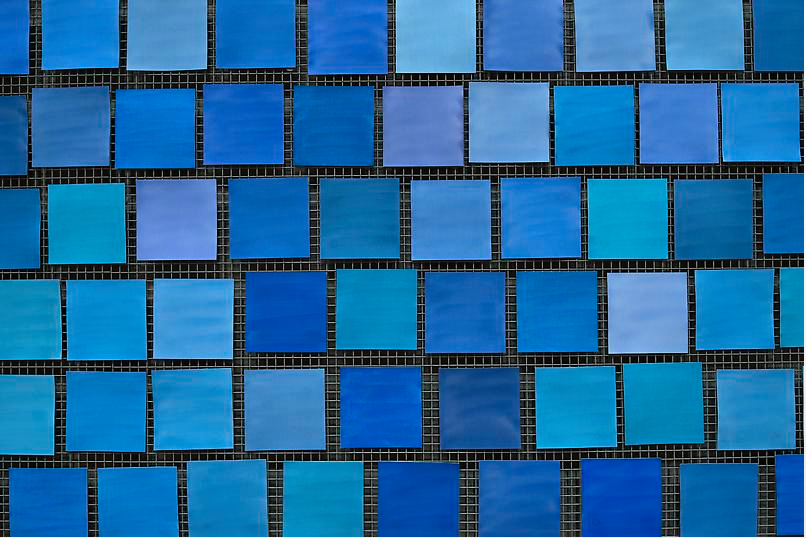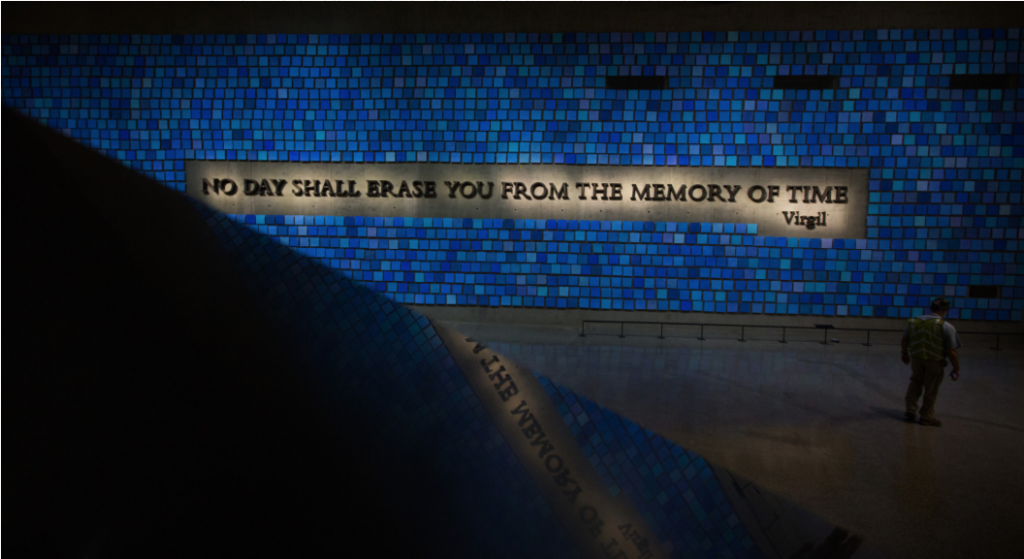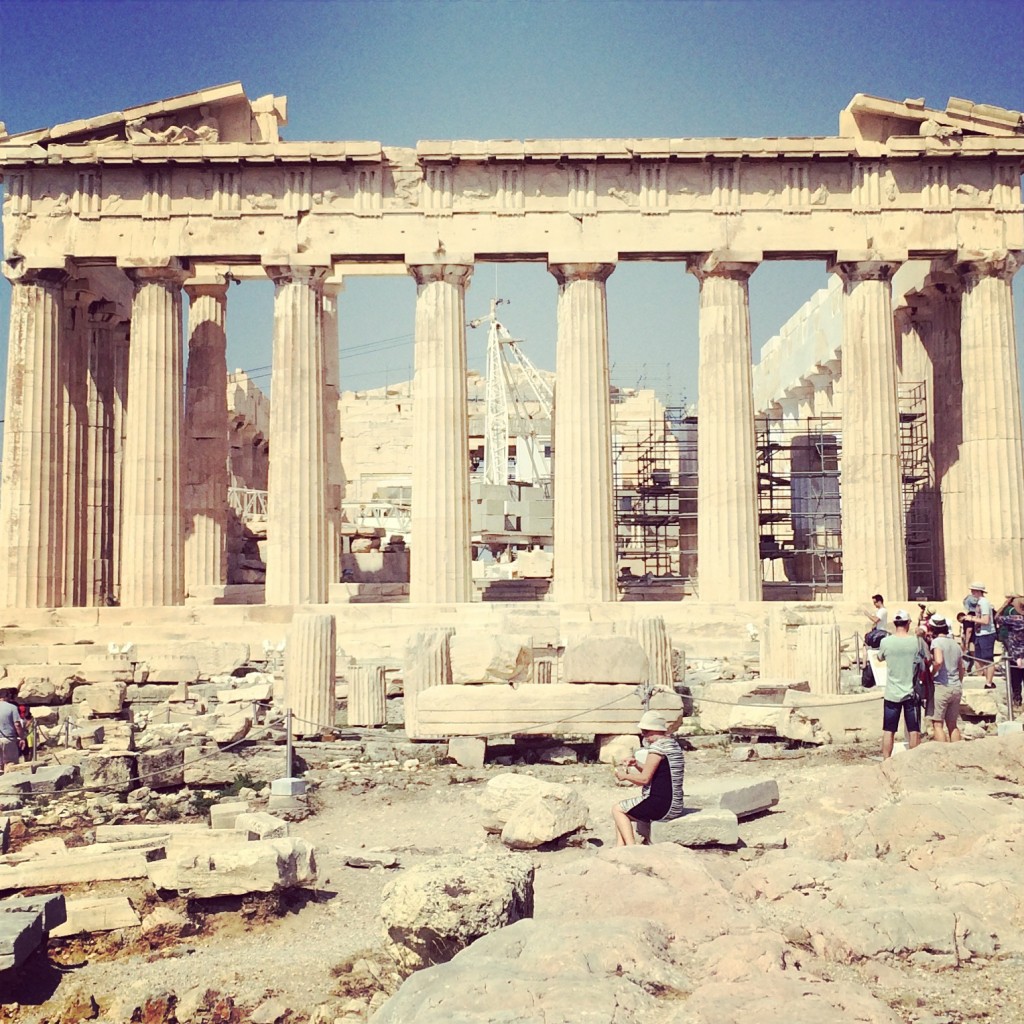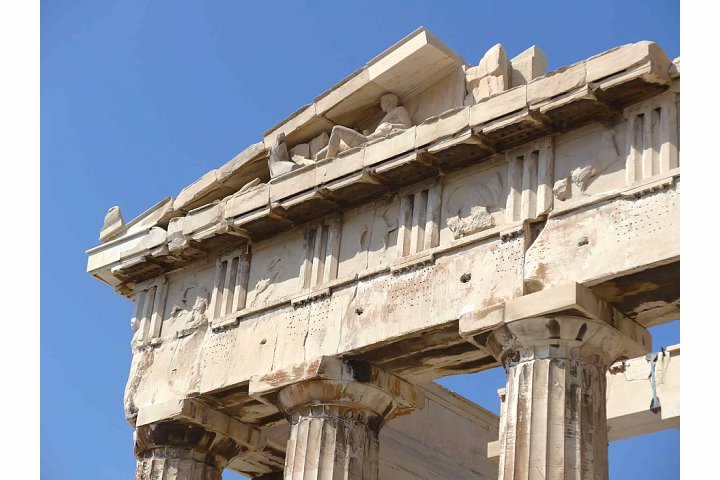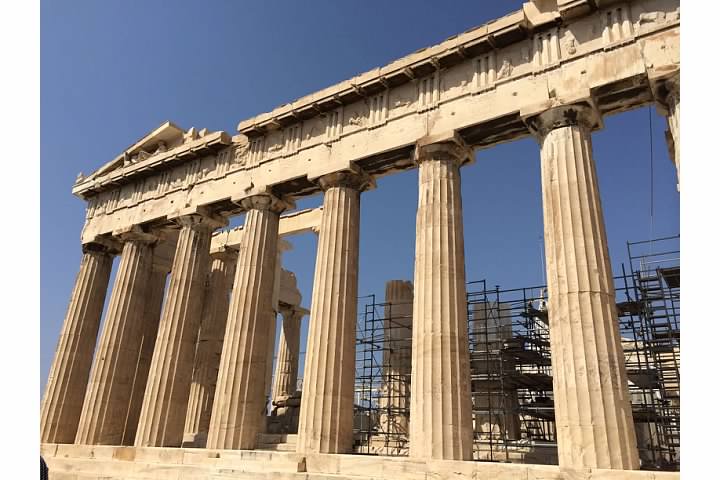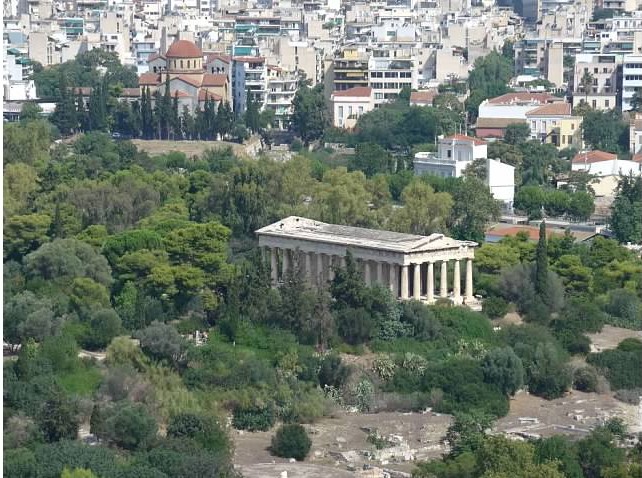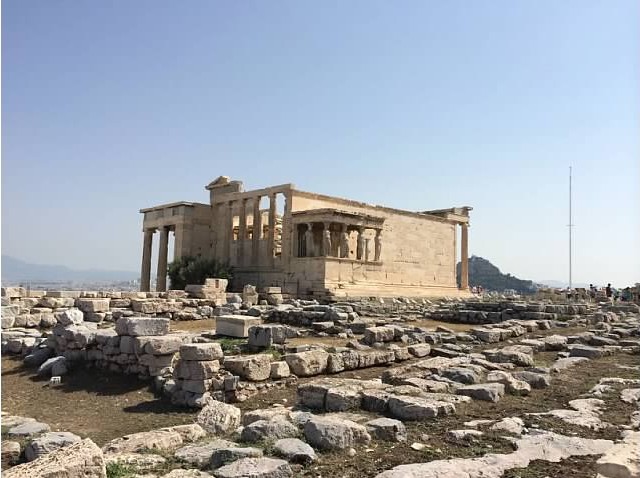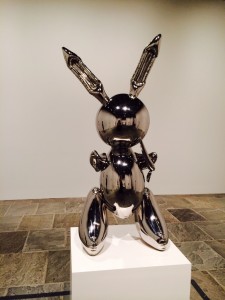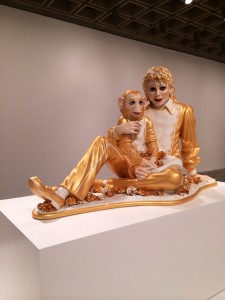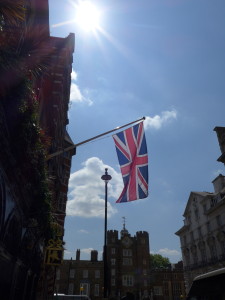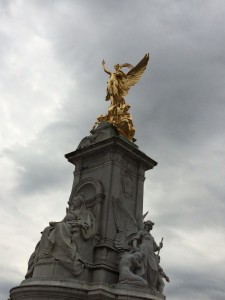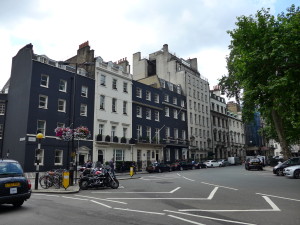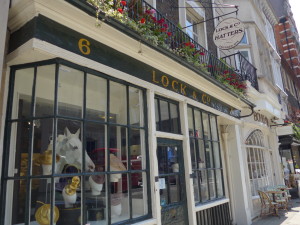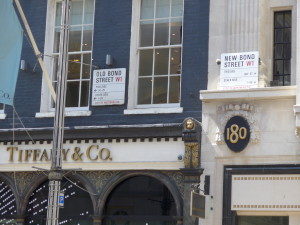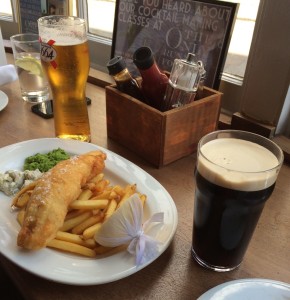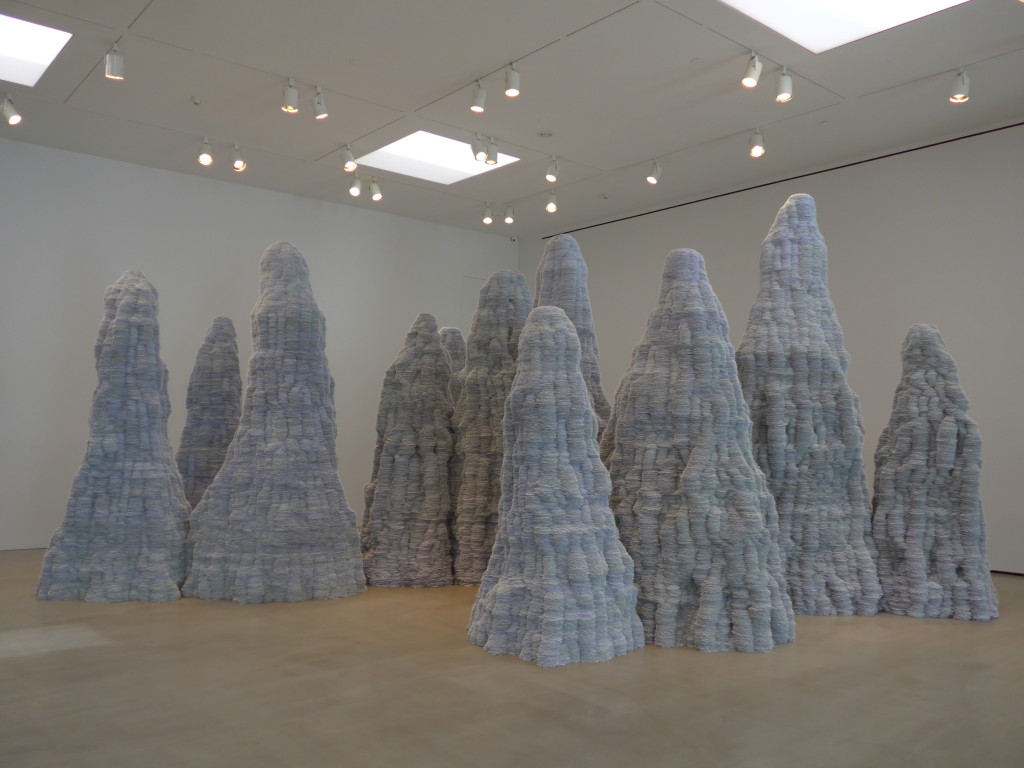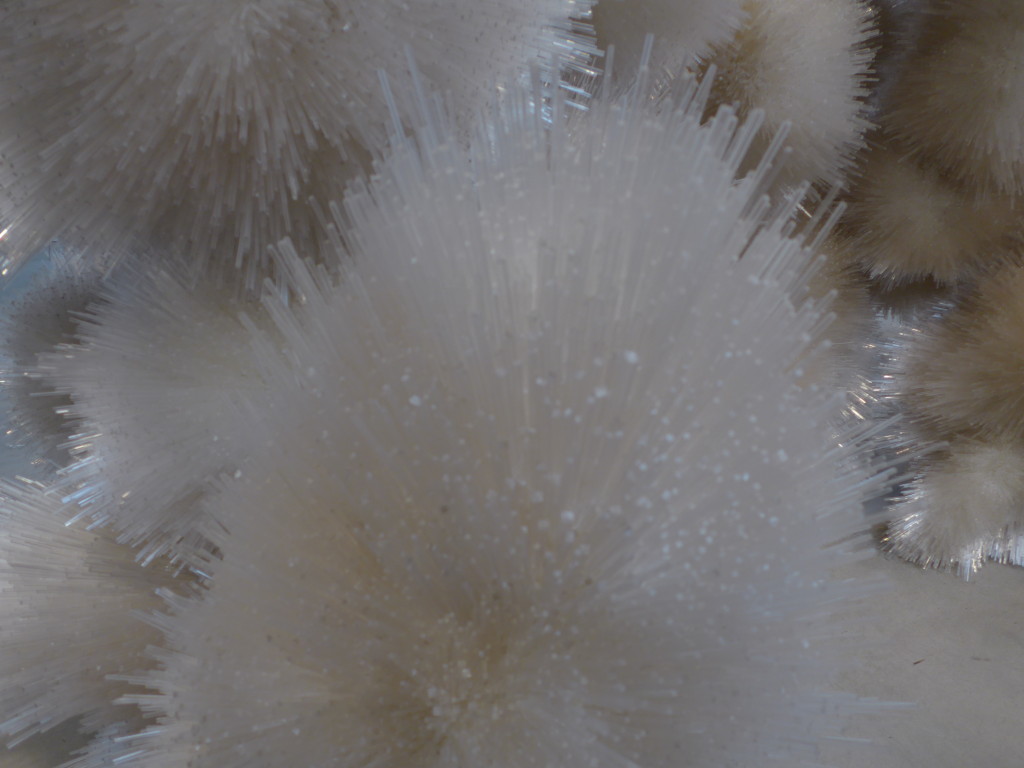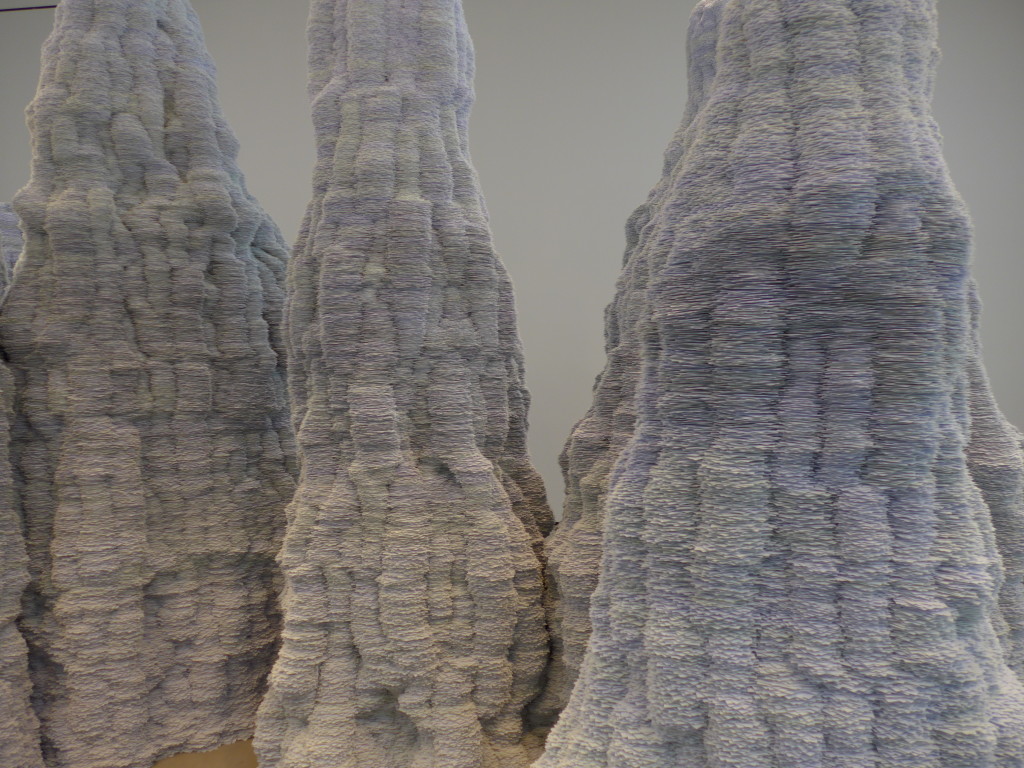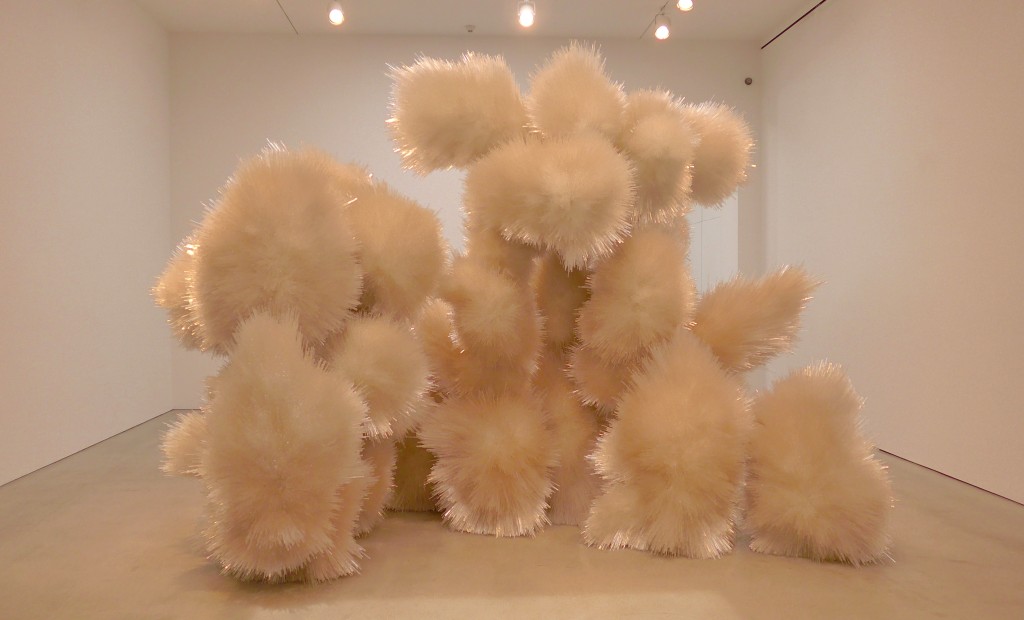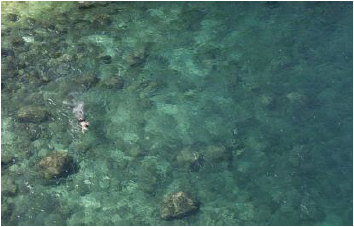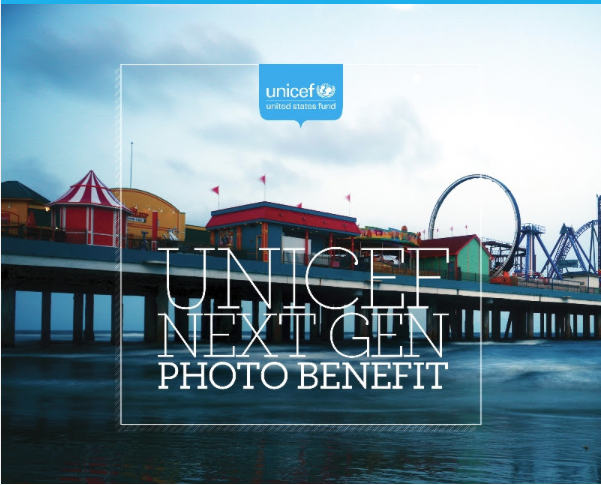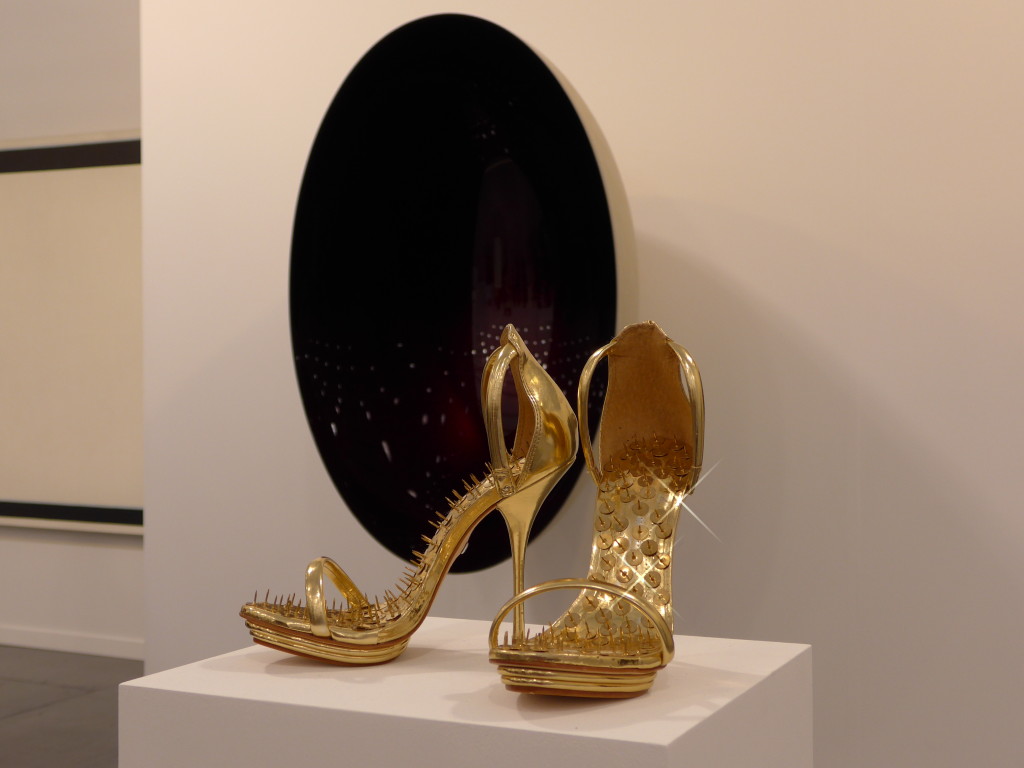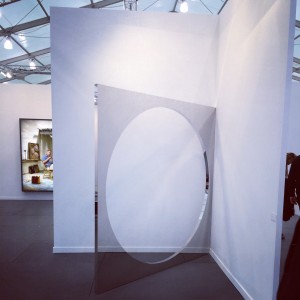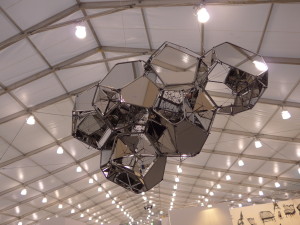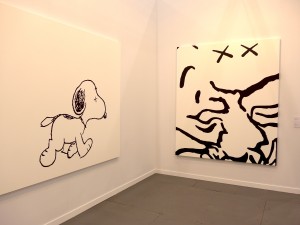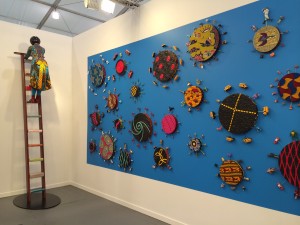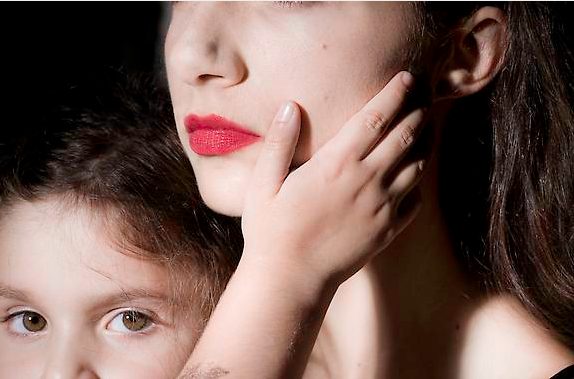Today marks a day forever embedded in our memories. It’s a day we wish we could forget; a day we wish never happened. Nearly 3,000 individuals lost their lives on September 11, 2001, but to the families there may be only one name on that list that, when called out during today’s memorial, causes their deepest 13-year wound to ache anew.
Spencer Finch and the 9/11 Memorial
September 11, 2014
Notes on the Past
August 13, 2014
When old age shall this generation waste,Thou shalt remain, in midst of other woeThan ours, a friend to man, to whom thou sayst,“Beauty is truth, truth beauty,” – that is allYe know on earth, and all ye need to know.– John Keats Ode on a Grecian Urn, Line 46-50
The Koons Effect
July 23, 2014
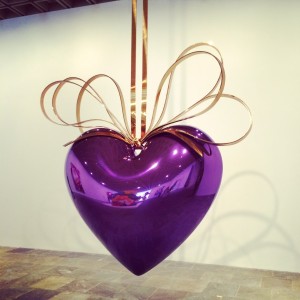 Thirty five years of inflatables, naked ladies, colored mirrors, basketballs, vacuum cleaners, and cartoon animals have gathered together for the first time. The menagerie of sculptures and paintings range from super-sized shiny to blandly ubiquitous, at times cerebral and at other times really in your face. He’s an extrovert who often makes somewhat uncomfortable comments about inflatable toys, like “The sexual power of the imagery was so intoxicating to me visually that I had to have a drink.” We are enchanted by his prolificness, his whimsy, and his celebrity. Collectors and speculators throw gobs of money at him for enormous metal Popeyes, lobsters, and balloon dogs. I’m talking, of course, about Jeff Koons whose first New York retrospective is currently on view at the Whitney Museum of American Art. Jeff Koons: A Retrospective is a celebration of an artist’s uncanny ability to make metal look plastic and Michael Jackson look white.
Thirty five years of inflatables, naked ladies, colored mirrors, basketballs, vacuum cleaners, and cartoon animals have gathered together for the first time. The menagerie of sculptures and paintings range from super-sized shiny to blandly ubiquitous, at times cerebral and at other times really in your face. He’s an extrovert who often makes somewhat uncomfortable comments about inflatable toys, like “The sexual power of the imagery was so intoxicating to me visually that I had to have a drink.” We are enchanted by his prolificness, his whimsy, and his celebrity. Collectors and speculators throw gobs of money at him for enormous metal Popeyes, lobsters, and balloon dogs. I’m talking, of course, about Jeff Koons whose first New York retrospective is currently on view at the Whitney Museum of American Art. Jeff Koons: A Retrospective is a celebration of an artist’s uncanny ability to make metal look plastic and Michael Jackson look white.
Postcards from London
July 1, 2014
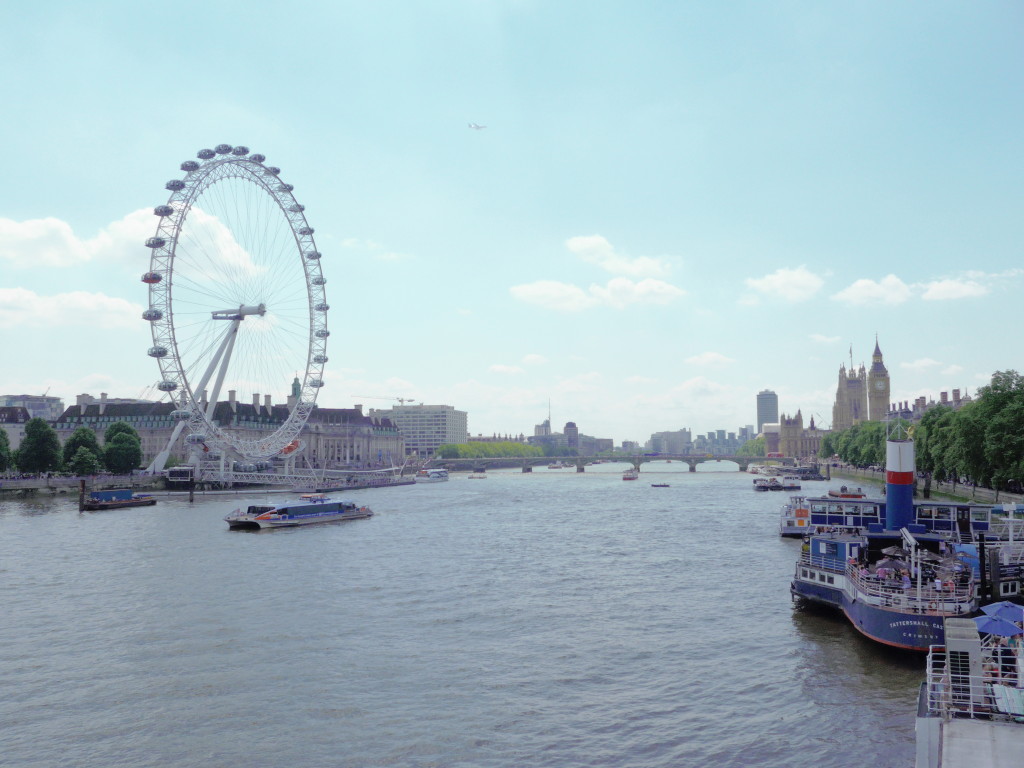 I jumped the pond for a few days and tackled as many exhibitions as my jet-lagged brain would allow. There’s really much too much to see in London in three days but I gave it a valiant effort. The highlight of my trip was Bridget Riley The Stripe Paintings 1961-2014 at David Zwirner, the Henri Matisse Cut Out exhibition at the Tate Modern, Adrian Ghenie’s Darwin Room at Pace London, early Jim Hodges at Stephen Friedman, and BANKSY at Sotheby’s. And I thoroughly enjoyed wandering around the lovely little Mayfair shops and pubs and enjoying all of the old-world charm London has to offer. Including a few pints of Guinness.
I jumped the pond for a few days and tackled as many exhibitions as my jet-lagged brain would allow. There’s really much too much to see in London in three days but I gave it a valiant effort. The highlight of my trip was Bridget Riley The Stripe Paintings 1961-2014 at David Zwirner, the Henri Matisse Cut Out exhibition at the Tate Modern, Adrian Ghenie’s Darwin Room at Pace London, early Jim Hodges at Stephen Friedman, and BANKSY at Sotheby’s. And I thoroughly enjoyed wandering around the lovely little Mayfair shops and pubs and enjoying all of the old-world charm London has to offer. Including a few pints of Guinness.
The Magical Worlds of Tara Donovan and Sterling Ruby
June 19, 2014
If you want to feel as Alice did when she fell down the rabbit hole, experience the installations of Tara Donovan and Sterling Ruby. Both artists create larger-than-life works, of all media, that allow you to momentarily escape this world and enter another.
Tara Donovan hypnotizes you by the sheer scale of her work. For her sculptures, she takes a simple, everyday, material – pencil, button, styrofoam cup, tape – and then multiplies the quantity by, like, a million. With the abundance she stacks and compiles until the accumulation of identical objects is transformed into something biomorphic.
Do the Polke
June 10, 2014
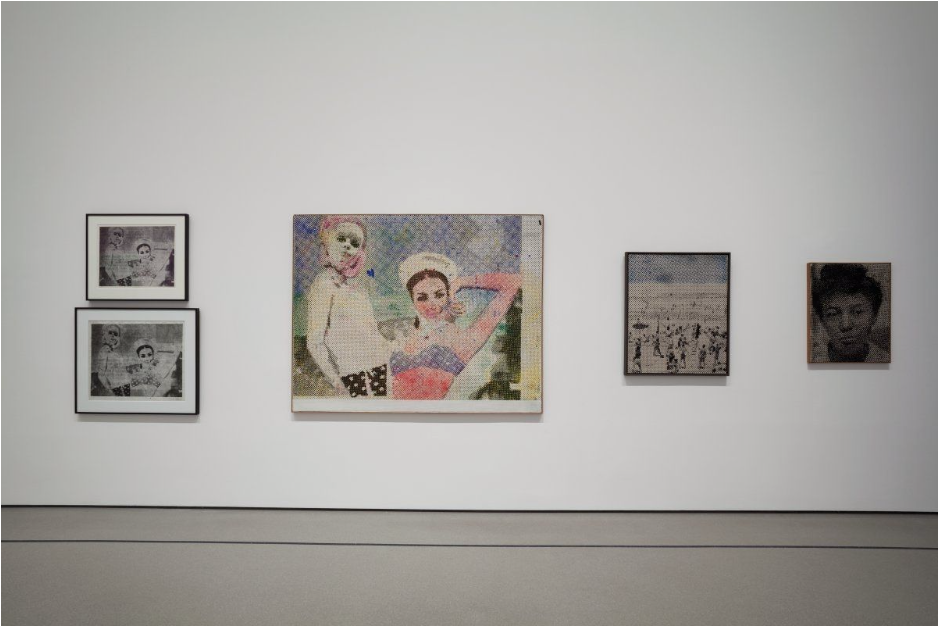
- © 2014 The Museum of Modern Art. Photo: Jonathan Muzikar. All works by Sigmar Polke © 2014 The Estate of Sigmar Polke/Artists Rights Society (ARS) New York/VG Bild-Kunst, Bonn, Germany
Stoned or sober, Sigmar Polke: Alibis 1963-2010 at MoMA is a trip. But one worth taking. (And, for the record, I was sober.) His talent lies in his unselfconscious exploration of just about every medium available to an artist – painting, printmaking, video, performance, photography, sculpture, etc. By dabbling in a little bit of everything, Polke’s oeuvre evades market categorization and continues to keep us all guessing. The curators of MoMA had their hands full when organizing this retrospective and (smartly) opted to install the show chronologically. So I jotted some notes as I followed their timeline of Sigmar Polke’s career:
The most Pop-y of Polke’s works are those from the mid-1960s, such as the painting Girlfriends, 1965/1966 (above). Taking an image from an advertisement, Polke mimics and caricaturizes the commercial printing process of using small ben day dots of color to create a picture. By hand, he enlarges and exaggerates these dots just enough to blur the image and reveal irregularities that occur in this mechanical process. Like the work of fellow German Gerhard Richter, his is an effort to expose the dissemination of mass culture as a halftone half-truth, an illusion constructed to make people want for an ideal or a lifestyle or a product as they entered a new modern, post-war, era. These ‘Polke-dots’ crop up in other paintings and prints the artist made in the 60s and 70s, becoming one of very few unifying themes of his artistic style.
Whitney Biennial
May 22, 2014
Collecting for a Cause
May 14, 2014
Remember my post last week about finding contemporary art at affordable prices? Well, along with being an advocate for prints, I’m also a huge advocate for – and collector of – photography. Better yet, I often find the best deals when buying photography at auctions and events for charitable causes. And if you live in New York City, you’ll have the chance to do just that this Saturday night!
UNICEF’s Next Generation group, for the past five years, has organized an annual Photo Benefit to support their extraordinary humanitarian projects around the world. Emerging and established photographers submit their work and the best images are selected for donation to the silent auction. Since the Next Gen crowd is younger – between the ages of 21 and 40 – prices for the photographs remain within the affordable realm. Bidding can start as low as $50! And these aren’t boring run-of-the-mill snapshots. The Next Gen team carefully curates unique, intriguing, exceptional artworks for your collecting pleasure.
This year, UNICEF Next Gen has teemed up with Aperture Gallery in Chelsea for the big event. As a member of the curatorial committee I can attest to the wall-worthy photographs up for grabs. Our theme for the artists is BLUE and their literal and conceptual interpretations really impressed us. You can preview the auction catalogue here. It’s hard to pick favorites, but if I had to it would be Mia Baxter’s Mare Adriatico, 2013, (above). Or maybe Katie Whitaker’s Hoops and Loops, Galveston, Texas, 2013 (below). Guess I’ll have to decide on Saturday!
Proceeds from the auction will benefit Next Gen’s ongoing efforts to raise $100,000 to support the UNICEF Tap Project, providing clean water to families and preventing water-borne illness. The ticket price alone of $60 can provide enough water purification tablets to decontaminate nearly 50,000 liters of water. Think about it. Buying great art at great prices for a great cause? Seems like a no-brainer.
See you Saturday! BUY TICKETS HERE.
Art Fair Rewind
May 13, 2014
I hit 5 fairs in 3 days and have the blisters to prove it… Each fair had its own vibe and some standout artworks worth mentioning here:
FRIEZE: I began with Frieze Art Fair on Randall’s Island where shiny sculptures by art stars like Anish Kapoor, Jeppe Hein, and Tomás Saraceno mingled with the playfulness of Yinka Shonibare MBE and KAWS. Kapoor and Hein are perennial art-fair favorites. Their highly polished curved reflective sculptures draw collectors in like magpies, myself included. They alter your perception of space and your own sense of scale changes in relation to them. (Side Note: the fabulous Shoes by Hans-Peter Feldmann express exactly how my own feet felt after hours of walking in heels. Ouch!)
The works of both KAWS and Shonibare operate within the context of contemporary culture and globalization. However, while KAWS is rooted in animation proliferation Shonibare is rooted in post-colonial identity. From afar, Shonibare’s work looks like a massive woven textile – a reference to his Nigerian heritage – but up close we see it’s constructed using small plastic toys and figurines collected here in NYC.
Mother’s Day
May 11, 2014
Wishing you and yours a very happy Mother’s Day. Whether you are celebrating your mother in person or in spirit, I hope you take a moment to cherish her and the influence she’s had on making you who you are.
Ever since the early prehistoric figurines were carved, the mother figure has remained one of the most oft-recurring images in pictorial art. (See: Venus of Willendorf) She is the symbol of life and metaphor for earth, and has embodied holiness since the first depiction of Madonna enthroned was painted, sometime around 400 A.D.
Fast-forward a few thousand years and we still find images of mothers in visual art. A recent exhibition by photographer, Elinor Carucci, at Edwynn Houk Gallery showed the artist-as-mother. Carucci’s series – titled Mother – intimately capture her past decade of motherhood from pregnancy to present. While each image is close-cropped and lit beautifully and dramatically, these aren’t perfect Christmas-card family photos. We see the tantrums and runny noses alongside the lovingly tender moments she has with her twins. For, being a mother isn’t about staging the ideal image, it’s about the complete unwavering love you have for your children in those tiny and messy times.
